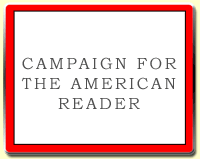Northanger Abbey by Jane AustenRead about the other entries on the list.
“Northanger Abbey! – These were thrilling words, and wound up Catherine’s feelings to the highest point of ecstasy.” Of all Jane Austen’s famous country houses, Northanger Abbey is irresistible simply because it’s so...disappointing. It is believed by the heroine to be the sort of spooky old ruin that features in Gothic novels – an Otranto or a Udolpho.
During the journey into Gloucestershire, Henry is amused to discover that Catherine imagines his family home will have secret passages, narrow cells and a ruined chapel. Instead, she finds modern lodges, elegant furniture, wide-paned windows and an army of well-trained servants. In her room, a strange bureau contains only a bundle of receipts. A sinister chest contains a counterpane. Finally – after making the mistake of suspecting Henry’s father of murder – Catherine reaches the conclusion that “Charming as were all Mrs Radcliffe’s works, and charming even as were the works of all her imitators, it was not in them perhaps that human nature, at least in the midland counties of England, was to be looked for!”
Northanger Abbey is among Johanna Lane's five best imaginary castles in fiction.
--Marshal Zeringue







































